Puckeridge
and Llancarfan Stations
The
following photos of the Puckeridge (English Chain
Master Station) and Llancarfan (South West British
Purple) were kindly sent to me by Paul Wynter
(MW3PWA) and were taken after the stations had been decommissioned.
I have
included a Google Earth image of the station to give the reader an appreciation
of the site layout.
I am
unfamiliar with much of the equipment in these photos, being a later generation
than that used for the Nigerian Chains and consequently the descriptions may
contain errors. I welcome any comments and corrections.
Puckeridge
(English Chain Master Station)

The Google
Earth Image of the Puckeridge Site. The Antenna
Tower is in the middle upper portion of the image, and the station buildings
are below.
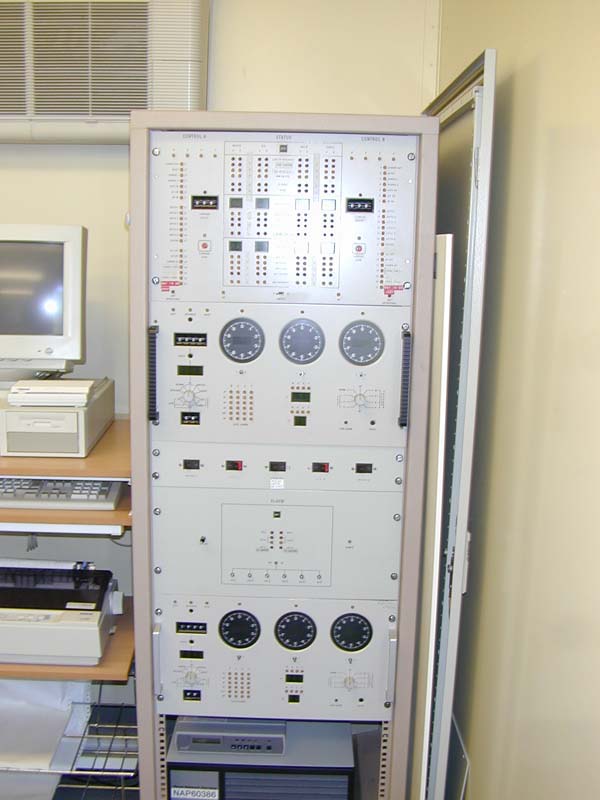
Control/monitoring
rack for the complete Chain (??)

Rectifiers
or chargers (??)
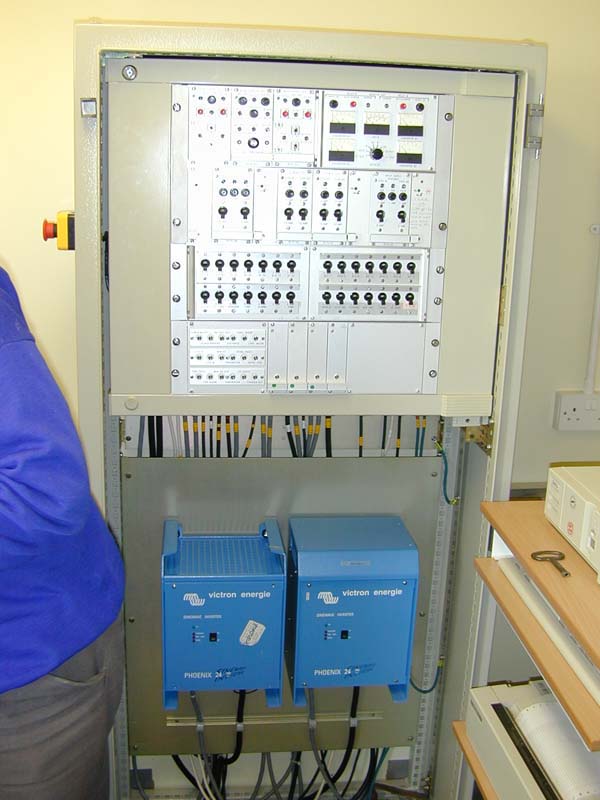
D.C.
Distribution Panel (??)
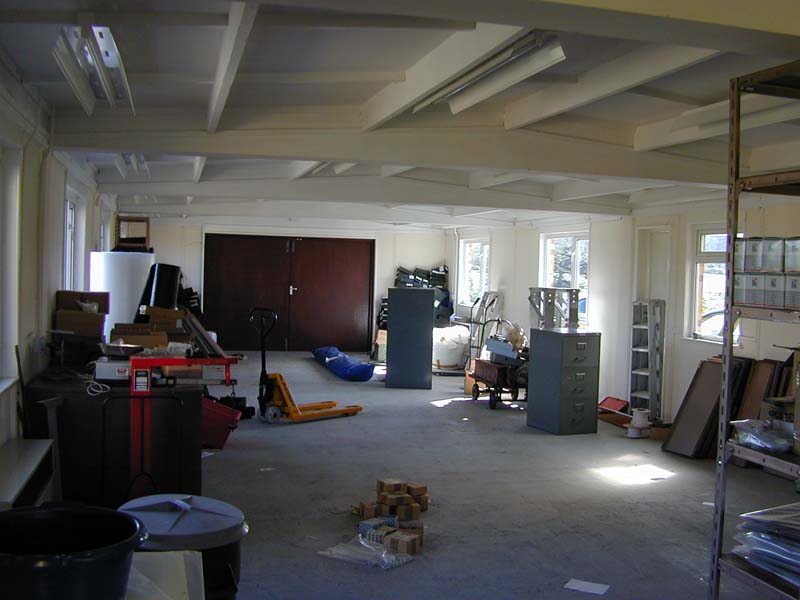
The Stores -
now sadly depleted.

Puckeridge
from a distance. It is also possible to see the masts to support an
emergency "T" antenna in the event of the main tower collapse.

The Puckeridge Tower

A view of
the lead-in support insulators. The inside of the coil houses were Faraday Shields,
the copper screens can just be made out (now painted white).
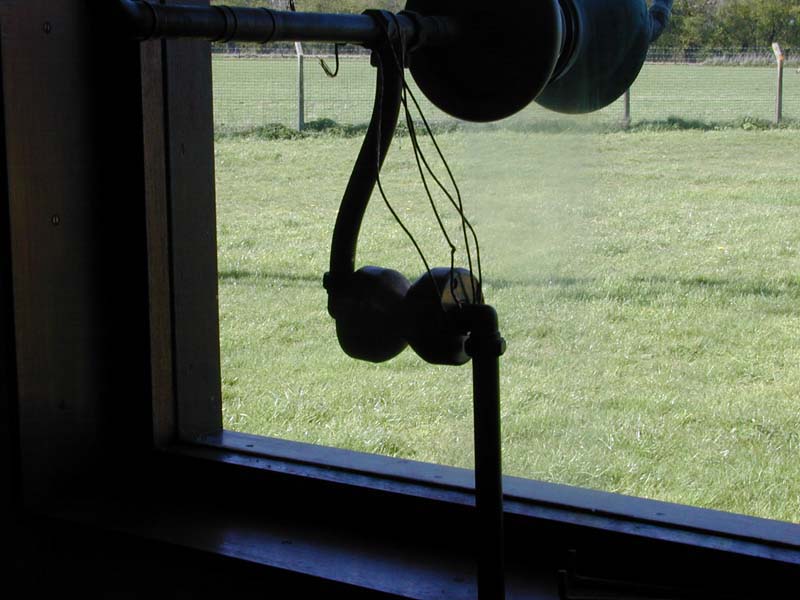
Spark Gap. Now with shorting wires to ground static build-up on the tower.
The
following black and white photos are courtesy of Terry Hughes GM4DSO taken in
the mid-1950s

A view of the transmitter hall at Puckeridge - the racks on the left are the phase control drive racks and the ones on
the right is the transmitter.
The
transmitter was unusual in that it was a parallel set of 807 valves so that one
could be pulled out while the rest carried on working.

At the foot of the mast at Puckeridge
with two overseas project division staff
The
following photos are of the English Chain Red Slave in Norfolk

A view of the transmitter hall in Norfolk (red)

A group under the mast in Norfolk.
The man in front of the mast is one of the
permanent staff (possibly Peter Bewers) and the other
two are OPD (Overseas Project Department) members.
The little boy is the son of the station
commander.
Llancarfan
(South West British Purple)

This is the
Google Earth Image of the site. The two coil houses for the antenna system are
in the lower middle of the image, and the station is to the upper left.
Originally
all UK Decca Stations were permanently manned, and typically the station
buildings would comprise of the station building together with a bungalow for
the resident station manager. (I believe the resident station manager for this
station was a Radio Amateur but I can't recall his callsign)
In the
1980/90s, Decca (then Racal) started to de-man the stations. The equipment was
upgraded and at the same time the stations were containerised. (I wish they had
done this in Nigeria!). The container is located in a small fenced compound to
the top right of the buildings in the Google earth image.
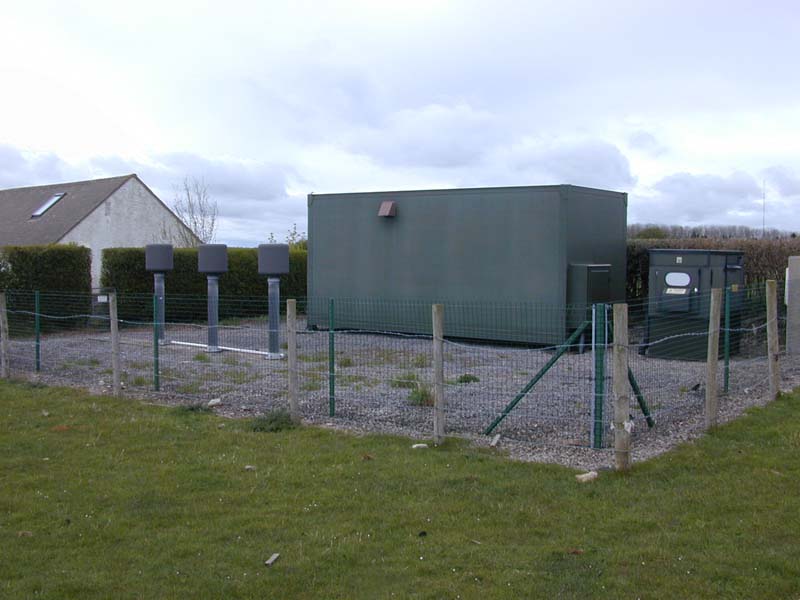
The Station
with equipment container, diesel generator (to the right) and the APS receiver
antennas to the right foreground.
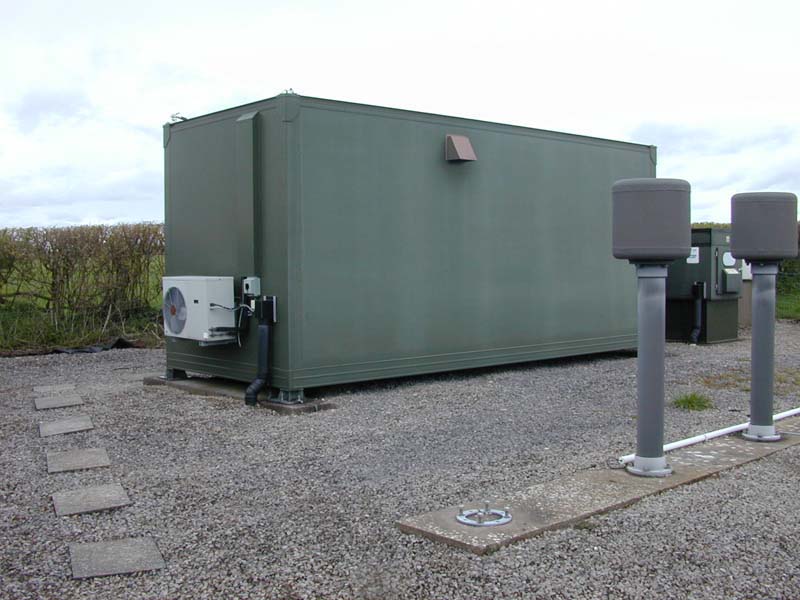
Another
image of the equipment container and two of the APS antennas
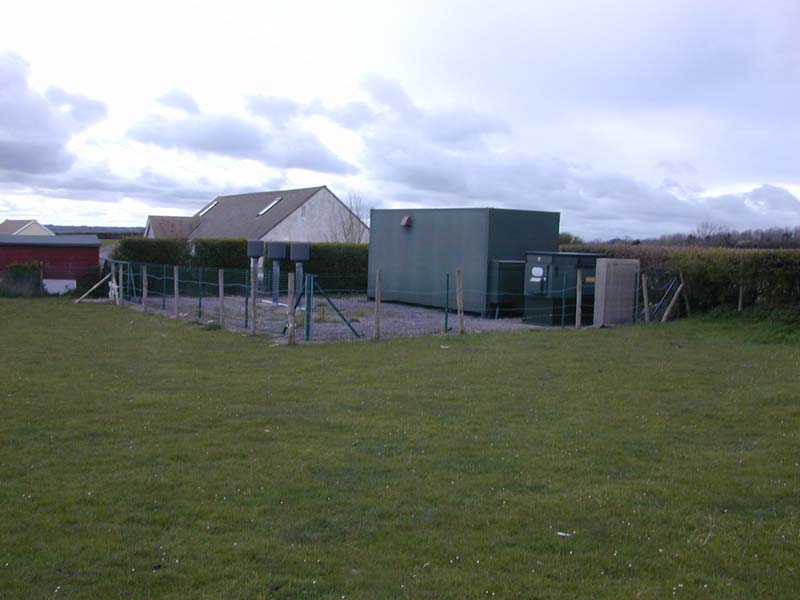
Another view
of the station

The Diesel
Generator.
In the UK these
were for standby use only, normally power would come from the mains.

The original
station buildings - now a residence. The UK Decca stations which I saw would
make very nice homes - they were quite spacious for the original valve
equipment.

The
transmitter rack.
In the
foreground is what appear to be the phase control equipment (phase synchronised
receivers and transmitter drivers)
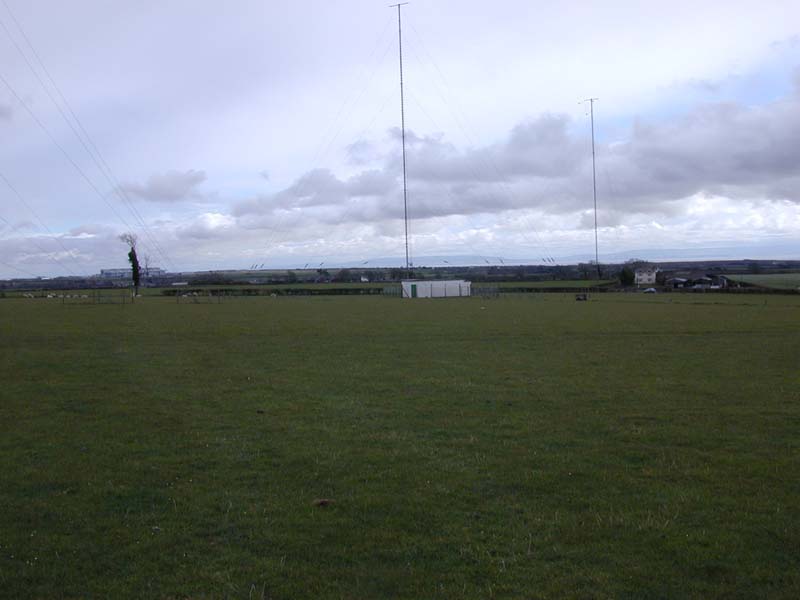
The Antenna.
A mixture of
antenna types were used. This is a "T" antenna.

One of the
end masts supporting the "T"
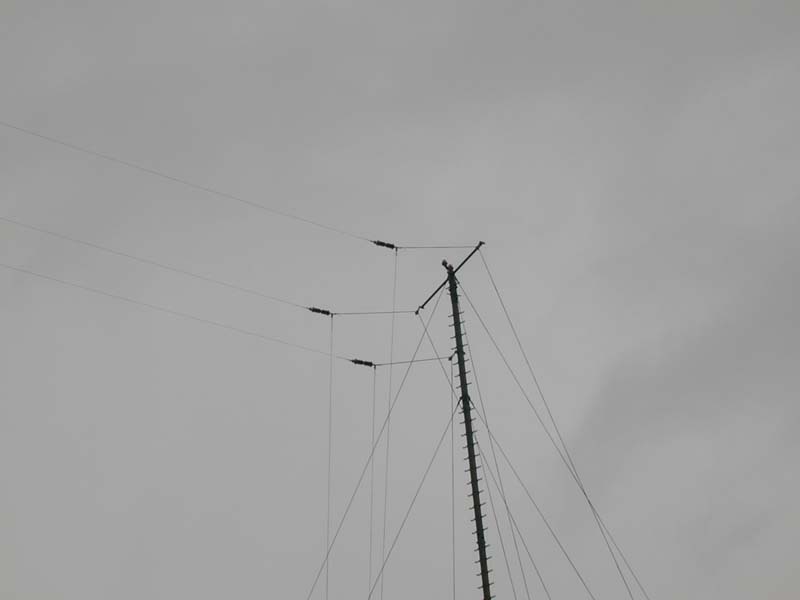
Close up of
the rigging

The Coil
Houses (Antenna Tuning Units).
Some
locations had two coil houses, the second being an emergency spare.

Lead in from
the antenna
Paul provided some background information to these photos:
"We were looking at sites (in 2001) to buy to re-use for radio related purposes, Wi-Fi etc."
"We asked Cardiff University, who owned the lease, if we could either buy or lease the one in St Mawgan (Llancarfan), and they said the already had the digger there to remove the earth mat and scrap the NEW cabin etc. I asked them not to do it and they just went ahead, the masts which were serviceable and maintained could have been used to mount an experimental coastal Wi-Fi station for shipping as it entered Bristol Channel. They stated that they saw no radio use for the site, didn't want anything to do with radio, and wanted to scrap everything and turn it back into grazing or redevelop it (unlikely they'd get planning permission)."
"All Photographs on this page are Full
Copyright 2005/6/7 Paul Wynter (MW3PWA) and Skycom Telecoms Ltd. All rights Reserved. Published with
Owner's Permission"
Other
Google Earth Images of Decca English and South West British Chain Sites.
During the preparation
of this page, I found Google Earth images of some other UK Decca sites. They
are parked here until I create a separate page for them.

Bolberry
Down in Devon. South West British Master Station.
The remaining two stations were at St.Mary's, Isles
of Scilly and St. Helier, Jersey. Unfortunately the Google Earth images of
these locations are not of a suitable resolution to see the sites.

Lewis East
Sussex. English Chain Green Station.

Norwich. English Chain Red Station.

Warwick. English Chain Purple Station.
Google Earth Images taken from Google - all
rights acknowledged
Return
to the Other Decca Stations Page
Last update 18/08/14